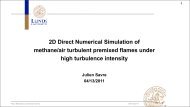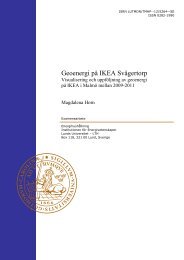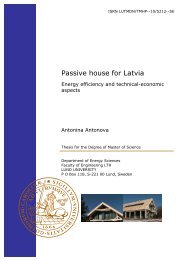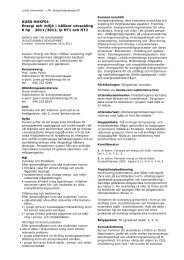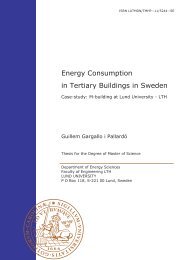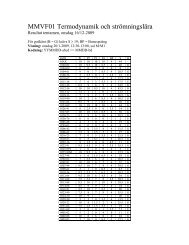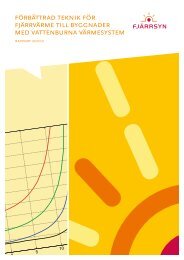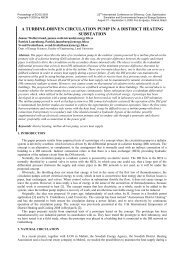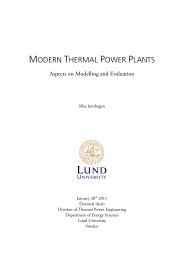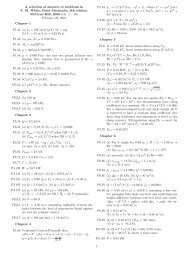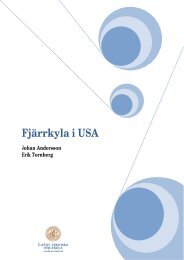Thesis for degree: Licentiate of Engineering
Thesis for degree: Licentiate of Engineering
Thesis for degree: Licentiate of Engineering
You also want an ePaper? Increase the reach of your titles
YUMPU automatically turns print PDFs into web optimized ePapers that Google loves.
Table 4.3: Inlet and operating conditions.<br />
Parameter<br />
Value<br />
Fuel utilization 80 %<br />
Oxygen utilization 20 %<br />
Inlet mole fraction <strong>of</strong> methane 0.171<br />
Inlet mole fraction <strong>of</strong> hydrogen 0.2626<br />
Inlet mole fraction <strong>of</strong> water 0.4934<br />
Inlet mole fraction <strong>of</strong> carbon monoxide 0.0294<br />
Inlet mole fraction <strong>of</strong> carbon dioxide 0.0436<br />
Inlet temperature<br />
Pressure<br />
Average current density<br />
1000 K<br />
1 atm<br />
3000 A/m²<br />
The results are presented in Table 4.4 and commented below <strong>for</strong> all levels <strong>of</strong> the analysis <strong>of</strong><br />
the kinetic criteria.<br />
Table 4.4: Results from the criteria analysis.<br />
Transport domain Heat transport Mass transport<br />
Interparticle<br />
No limitation<br />
–<br />
Equation (3.40): ~10 -5 –10 -9 < ~10 -2<br />
Interphase<br />
No limitation<br />
Bi = 2 – 4∙10 -2 < 10<br />
No limitation<br />
Equation (3.45):<br />
~10 -7 –10 -8 < ~1–10 -2<br />
Intraparticle No limitation No limitation<br />
Equation (3.61):<br />
η ≈ 0.999 > 0.95<br />
The results are homogeneous with no limitations <strong>for</strong> any <strong>of</strong> the involved scales and reactions.<br />
As the criterion is fulfilled <strong>for</strong> the heat transport at the interparticle transport level then no<br />
limitation occurs <strong>for</strong> the heat transport at interphase or intraparticle level. The main difference<br />
between the steam re<strong>for</strong>ming reaction and the electrochemical reactions is that the latter ones<br />
have a somewhat higher reaction rate. These reactions occur only in a small part <strong>of</strong> the<br />
anode/cathode domain and the reaction rate is highest at the boundary between the anode and<br />
electrolyte or between cathode and electrolyte. But the criteria <strong>for</strong> the electrochemical<br />
42



